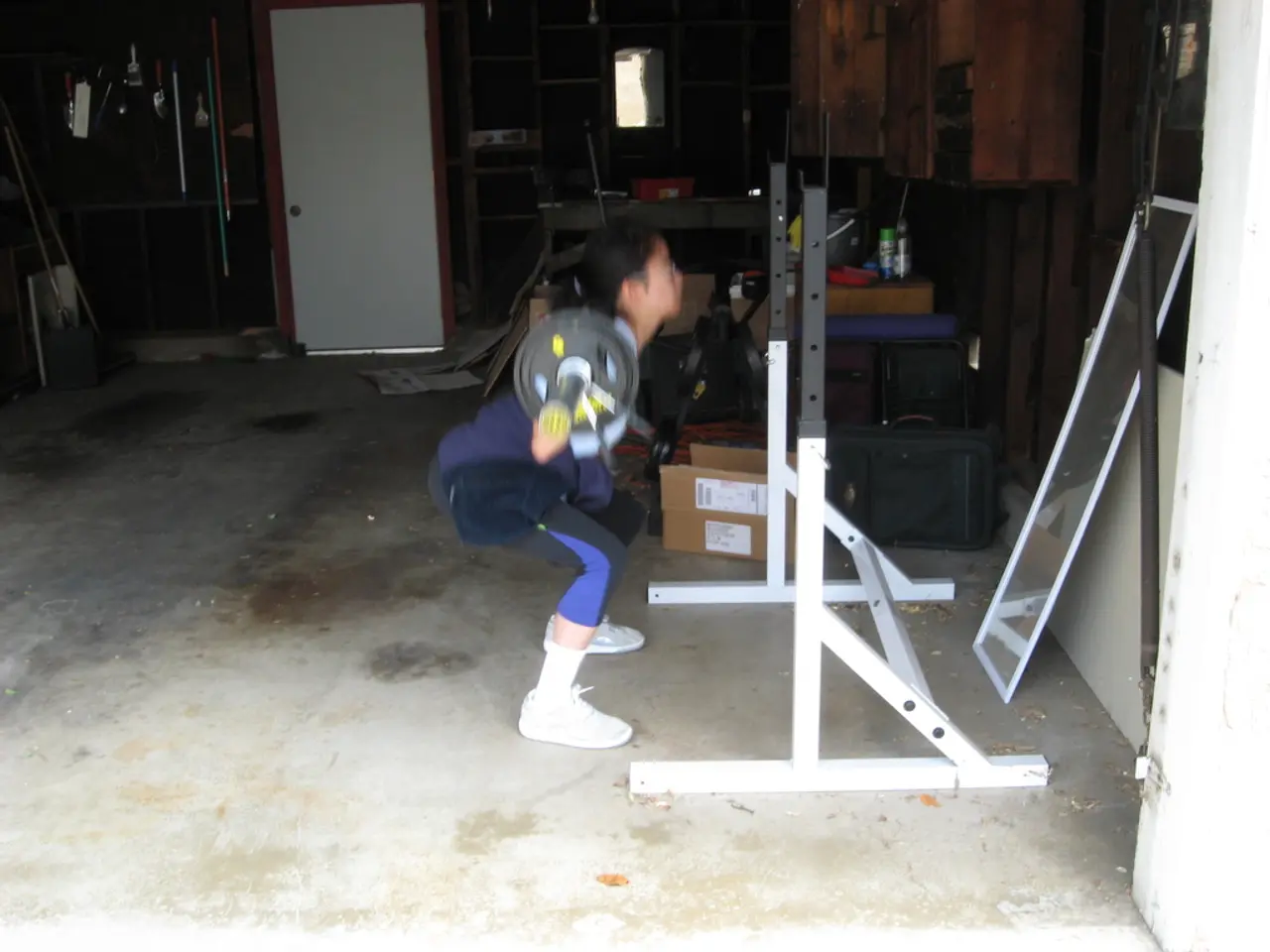Imbalanced Shoulders: Origin, Remedies, and Workouts
Uneven shoulders, a condition where one shoulder appears higher than the other, can be a cause for concern. This article aims to shed light on the common causes, recommended exercises, and when it's necessary to seek medical advice.
Muscular imbalances, structural or skeletal issues, and lifestyle factors are some common causes of uneven shoulders. habitual use of the dominant shoulder, carrying heavy bags on one side, overuse of the shoulder muscles, tight upper back muscles, and poor posture are contributing factors. Sports like tennis, golf, and baseball can also increase the risk by causing posture imbalances.
One notable cause of uneven shoulders is scoliosis, a sideways curvature of the spine. This condition can be recognized by one shoulder blade being higher or more prominent than the other, and early detection and treatment are important to prevent progression. Scoliosis affects an estimated 2-3% of people in the United States and usually develops between the ages of 10 and 15 years.
Recommended exercises for uneven shoulders primarily focus on addressing muscular imbalances, especially in the trapezius muscle group. Exercises like the internal rotation exercise, external rotation exercise, crossover arm stretch, pendulum exercise, and standing row exercise can help improve balance and reduce tightness. Regular performance of these exercises can help restore shoulder alignment by reducing tightness and strengthening weak muscles.
If uneven shoulders are accompanied by pain, discomfort, stiffness, or neurological symptoms (like numbness or tingling), it's essential to seek medical attention. Visible signs suggestive of spine issues such as scoliosis—uneven shoulders with one shoulder blade more prominent, uneven waist or hips, or rib cage protrusion—also warrant a medical evaluation. If symptoms worsen or do not improve with home exercises, or if there is difficulty breathing or significant back pain, prompt medical attention is necessary.
Early evaluation by a healthcare professional is crucial for children or adolescents with suspected scoliosis, as it enables proper diagnosis and treatment planning. Treatment options for nerve damage or conditions causing uneven shoulders include physical therapy, surgery, and medication.
In conclusion, understanding the causes of uneven shoulders and the recommended exercises can help manage this condition. However, it's essential to seek medical advice when experiencing accompanying symptoms to identify any underlying conditions that may require specific interventions.
- Atopic dermatitis, a chronic skin condition, can sometimes exacerbate muscle imbalances due to frequent scratching and self-inflicted pressure on one shoulder.
- Diabetes, a metabolic disorder, may lead to various health-and-wellness issues, including poor circulation, which can slow down the healing process in cases of shoulder injuries and contribute to uneven shoulders.
- Bipolar patients may experience periods of decreased motivation for fitness-and-exercise, leading to sedentary behaviors that can contribute to muscular imbalances and uneven shoulders.
- Psoriatic arthritis, a form of inflammatory arthritis, can affect the spine and cause scoliosis, leading to uneven shoulders and other spinal deformities.
- Hepatitis, an inflammation of the liver, may not seem directly related to the condition, but its impact on overall health and well-being could indirectly contribute to poor posture and muscular imbalances that result in uneven shoulders.
- Arthritis, a degenerative joint disease, can also lead to spinal changes, such as scoliosis, that result in uneven shoulders due to uneven weight distribution.
- Alzheimer's disease, a neurodegenerative disorder, may affect a person's ability to perform it's necessary exercises or maintain good posture, leading to the development of uneven shoulders.
- Scoliosis patients may experience additional complications, such as migraines, due to the asymmetry in the spine and neck.
- Ulcerative colitis, an inflammatory bowel disease, can lead to depression and decreased motivation for fitness-and-exercise, putting individuals at risk for developing uneven shoulders and other muscular imbalances.
- Type 2 diabetes and depression are often associated with inactivity and a sedentary lifestyle, both of which can contribute to muscular imbalances, poor posture, and the development of uneven shoulders. Moreover, science suggests that therapies-and-treatments targeting these underlying conditions can help prevent and manage uneven shoulders in the long run.




